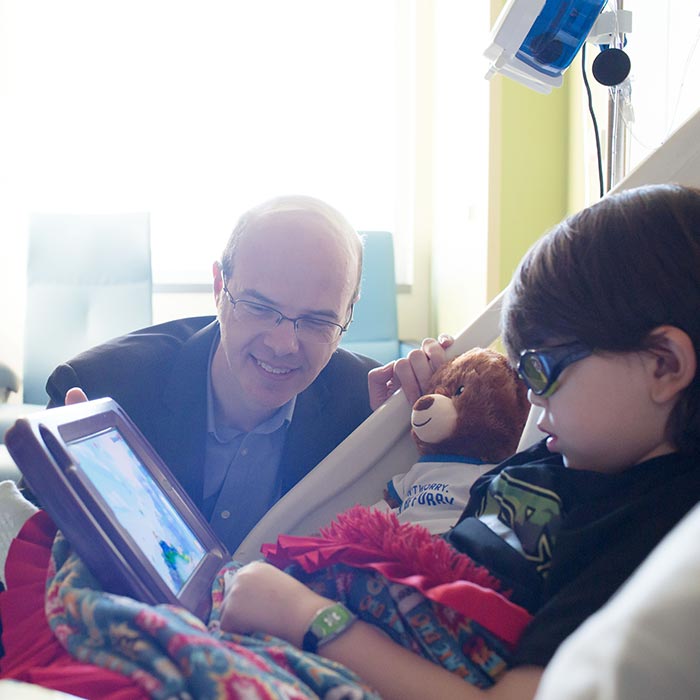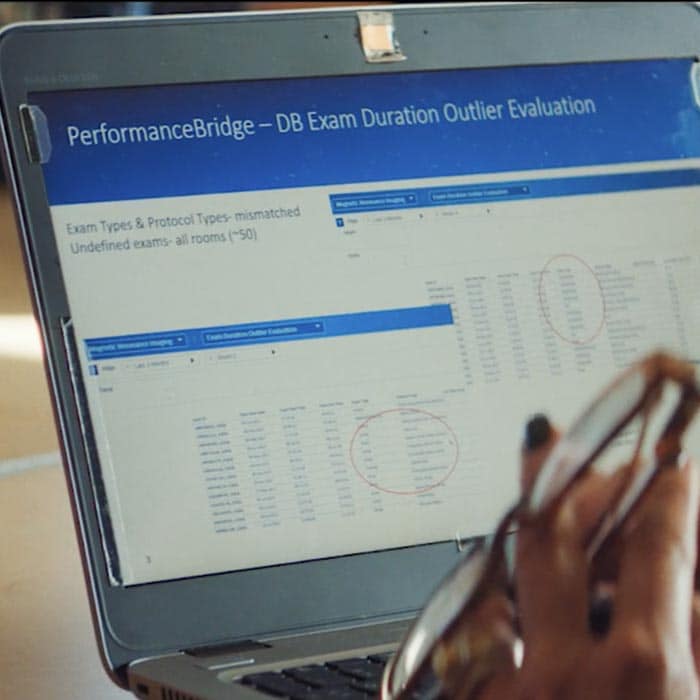
Health knows no bounds
Realizing radiology productivity benchmarks through process improvement
Health professionals:
talk to us about your biggest challenges
Health professionals:
talk to us about breaking boundaries
Fill out our form or call us at 978-659-3500 (8 a.m. - 6 p.m. EST)
As healthcare continues its relentless drive to deliver operational efficiency – bringing new workflows, enhancing patient and staff experience and providing quality patient centered care – perhaps the only constant is change.
While no single role is immune to the pressures of delivering better outcomes in the era of value-based care, the weight on the radiology department feels more concentrated than most—especially among pediatric populations. For radiology departments, there is pressure to use the huge volumes of data that sit in hospital systems to simplify complicated workflows, reduce workloads and the time it takes to do the analysis and recommend a course of action.
Rising workloads in imaging
Year after year the workload of radiology increases, putting pressure on departments to increase their services and continue to deliver the best care experience to patients, without corresponding increase in resources. Their role has often relied on collecting data from multiple disjointed systems across the hospital. At Phoenix Children’s Hospital about 150 to 200 patients a week receive MRIs and the biggest challenge the radiology department faces is around patient scheduling. This is because every department and every modality has different needs and technologists have to quickly figure out how to best meet the needs for each individual modality. “There’s always a pressure in radiology to perform at a certain level and meet the needs of the patients finding the best way to be efficient to get them all in, because each patient’s going to be unique,” says Matt Eslinger, Lead Technologist for MRI, Phoenix Children’s Hospital. “The science behind everything that we do is constantly evolving, so we constantly have to adapt on how to better schedule these patients.” As healthcare continues to simplify cost structures, radiology faces a number of challenges: how can our department keep up with innovation and change and keep costs down? How do we leverage the data we have captured to support our productivity goals? Can standardization of workflows be compatible with the quality patient centered care we deliver?
Central role in patient care
As the sole human element in an often-intimidating diagnosing process, radiologists must deliver new patient information and findings with each patient’s family and clinical teams. And when working with a pediatric patient population, radiologists must be even more sensitive to patient ages, level of understanding and parent perspectives. As demand for medical imaging has increased, radiology workflow has become increasingly complex with additional reporting tasks and duties and potential staff shortages all occupying valuable time. Managing workflow is one of the biggest challenges in modern medical care, especially for radiology because each patient is unique and their time is spread across many different activities: from scheduling exams to patient billing, the radiologist is present, a core player in the patient experience.
“We’re not just focusing on the patient and the scan, we’re also focusing on answering the phone, scheduling, doing the paperwork, finding out protocols, getting images checked, and at the same time focusing on our patients,” says Amber Pokorney, Chief Research MRI Technologist at Phoenix Children's Hospital. That is why managing workflow is one of the biggest challenges in modern medical care, especially for radiology: each patient is different and has different needs. “I think the main problem we face in radiology is meeting the needs of the patients, so figuring out the best way to manage our time for each individual patient, and not think of them as just a number,” says Mr.Eslinger. “Because we’re not going to see most of these kids just one time. These are going to be children who come back to us time and time again. So our job has to be personable, so that they’re not afraid to come back every time.”
Complicated workflows, unstructured data
Clinicians and hospital administrators have never had access to more data, but at the same time, it has never been harder for them to process it all. Managing patient throughput is also a challenge for technologists because of the lack of timely, reliable and actionable data. There is difficulty working toward a common improvement goal across different departments. In healthcare, data sits in multiple departments, in multiple formats, and most of it is unstructured1. Unlike many other industries where the data is relatively ‘clean’ and normalized, a lot of clinical information is currently captured in medical notes of various kinds. This makes it even more challenging for clinicians to quickly extract insights from different data sources. From an operational efficiency point of view, there is also lots of valuable data in hospitals that often remains unused, which could be used to optimize scanner utilization or productivity. “The more granular the data it is, the more useful it is,” says Bill Barta, Administrative Director of Imaging Services at Phoenix Children’s Hospital. “As radiology leaders we need to use data to improve what we do. The challenge has always been getting accurate and usable data.”
Share this page with a colleague
1 HIT Consultant, ‘Why Unstructured Data Holds the Key to Intelligent Healthcare Systems’

You might also be interested in:
“I think the main problem we face in radiology is meeting the needs of the patients, so figuring out the best way to manage our time for each individual patient, and not think of them as just a number”
Matt Eslinger
Lead Technologist, MRI, Phoenix Children’s Hospital
Meeting the top
challenges in
health informatics



Read more stories and articles
Interoperability in healthcare at an enterprise-wide level
Building partnerships.
Breaking barriers.
We work in partnership with health systems to help drive innovation, support their financial and operational goals, and enable their transformation in a value-driven era. The result can be both operational excellence and more connected, predictive and personalized care delivery.
Let's talk

What are your biggest challenges in informatics? Whether its interoperability across your enterprise or achieving greater standardization of care, we partner with you to deeply understand your infrastructure and operations, and deliver solutions that help your transform your health system. Reach out using the form below to get started.









